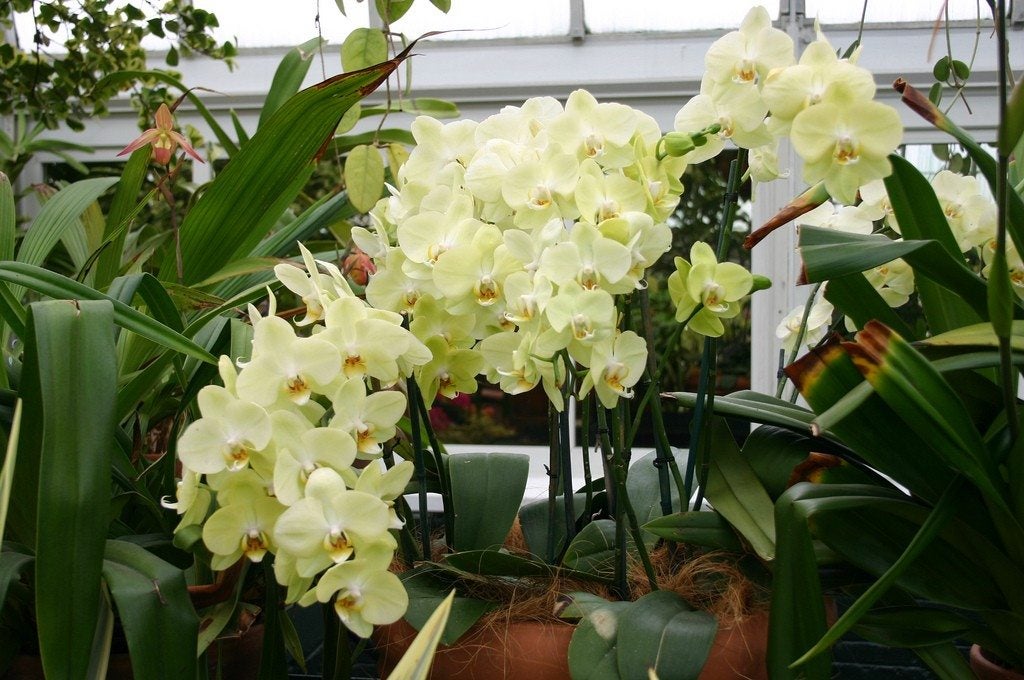Phalaenopsis Orchid Care: Tips For Growing Phalaenopsis Orchids
Growing phalaenopsis orchids was once an elite and costly hobby for those dedicated to phalaenopsis orchid care. Learn how to care for a phalaenopsis orchid in this article.


Growing phalaenopsis orchids was once an elite and costly hobby for those dedicated to phalaenopsis orchid care. Nowadays, advances in production, largely due to cloning with tissue culture, makes it affordable for the average gardener to learn how to care for a phalaenopsis orchid. Impress your friends by growing these showy, long lasting blossoms.
What are Phalaenopsis Orchids?
Commonly known as moth orchid, info about phalaenopsis says they're epiphytes, growing attached to tree branches in their native, tropical conditions.
The broad-leafed plant produces long lasting blooms that are flat and showy, borne on arching stems.
It should be noted when answering what are phalaenopsis orchids, that blooms may last two to three months. They're one of the easiest orchids to grow.
Moth orchid size is measured by the span of the leaves. The wider the leaf span, the more blooms you can expect from this orchid.
Numerous hybrids and cultivars bloom at different times of the year.
Moth Orchid Info and Care
Moth orchid info indicates this plant is best grown in diffused or low light situations, and in standard household temperatures to provide the right phalaenopsis orchid care.
Sign up for the Gardening Know How newsletter today and receive a free copy of our e-book "How to Grow Delicious Tomatoes".
Temperatures around 65 to 75 degrees F. (18-24 C.) during the day and ten degrees lower at night are appropriate for this plant.
Broad spectrum fluorescent lights can be used for successfully growing phalaenopsis orchids. Learning how to care for a phalaenopsis orchid starts with potting your new plant in the right medium.
Never plant growing phalaenopsis orchids in regular potting soil, as roots will suffocate and rot away. Grow them in a coarse textured mixture, such as a commercial mix for epiphytic orchids. You can make your own soilless mix for growing phalaenopsis orchids from coarse fir bark, hardwood charcoal, perlite, and coarse peat moss.
Potting mixture for growing phalaenopsis orchids should remain moist, drying slightly between waterings, but never drying out completely.
Some moth orchid info recommends watering with three ice cubes per week to avoid overwatering. As the mix ages, nutrient-holding and drainage capabilities decrease.
Repot your orchid every two to three years. High humidity is necessary for the optimum performance of growing phalaenopsis orchids. Moth orchid info advises humidity between 50 and 80 percent.
Accomplish this with a room humidifier, pebble tray beneath the plant, and misting. Fertilize the moth orchid when new growth is forming. Use a fertilizer formulated for orchids or a balanced houseplant food with the ratio 20-20-20 on the label.

Becca Badgett was a regular contributor to Gardening Know How for ten years. Co-author of the book How to Grow an EMERGENCY Garden, Becca specializes in succulent and cactus gardening.